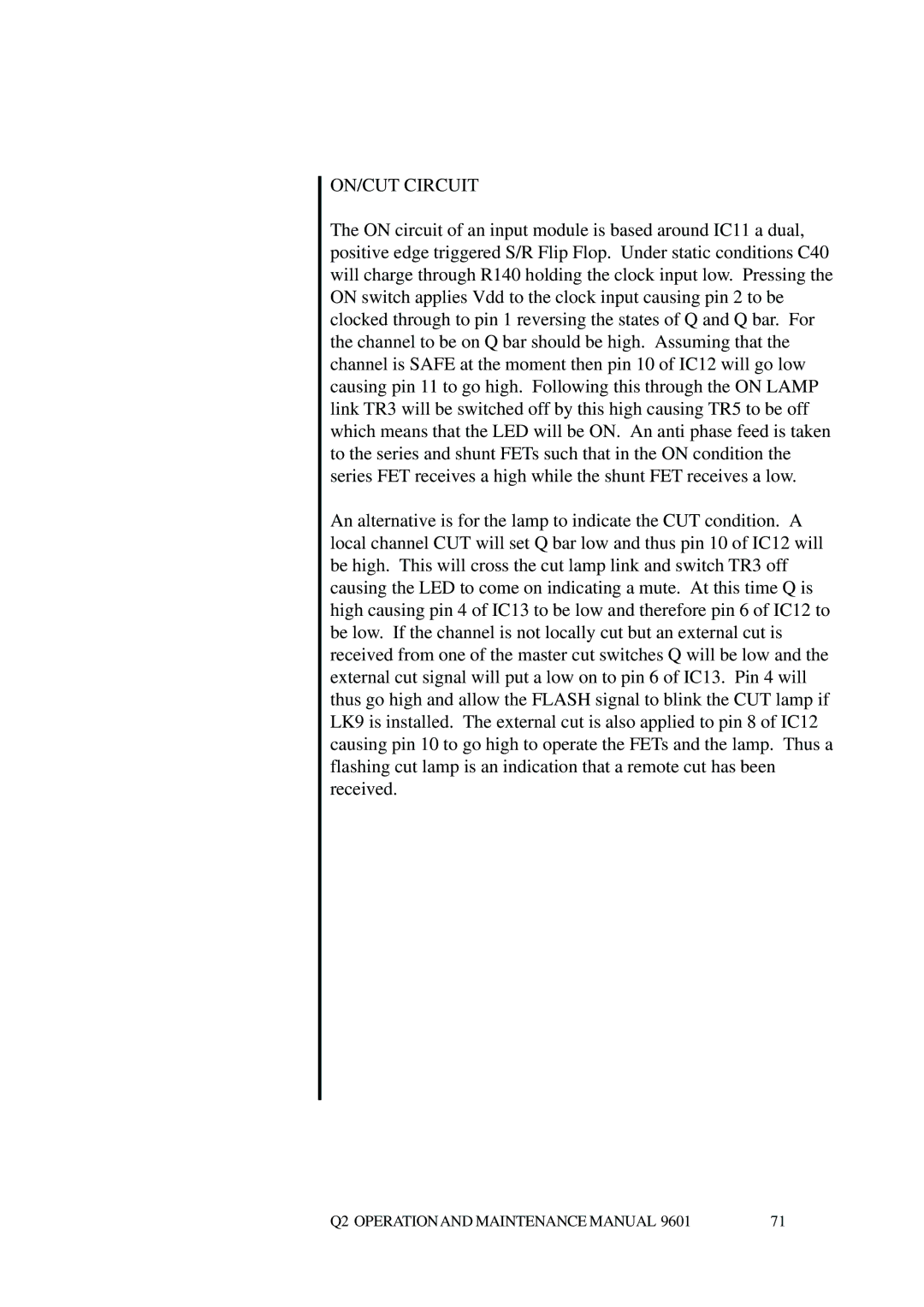ON/CUT CIRCUIT
The ON circuit of an input module is based around IC11 a dual, positive edge triggered S/R Flip Flop. Under static conditions C40 will charge through R140 holding the clock input low. Pressing the ON switch applies Vdd to the clock input causing pin 2 to be clocked through to pin 1 reversing the states of Q and Q bar. For the channel to be on Q bar should be high. Assuming that the channel is SAFE at the moment then pin 10 of IC12 will go low causing pin 11 to go high. Following this through the ON LAMP link TR3 will be switched off by this high causing TR5 to be off which means that the LED will be ON. An anti phase feed is taken to the series and shunt FETs such that in the ON condition the series FET receives a high while the shunt FET receives a low.
An alternative is for the lamp to indicate the CUT condition. A local channel CUT will set Q bar low and thus pin 10 of IC12 will be high. This will cross the cut lamp link and switch TR3 off causing the LED to come on indicating a mute. At this time Q is high causing pin 4 of IC13 to be low and therefore pin 6 of IC12 to be low. If the channel is not locally cut but an external cut is received from one of the master cut switches Q will be low and the external cut signal will put a low on to pin 6 of IC13. Pin 4 will thus go high and allow the FLASH signal to blink the CUT lamp if LK9 is installed. The external cut is also applied to pin 8 of IC12 causing pin 10 to go high to operate the FETs and the lamp. Thus a flashing cut lamp is an indication that a remote cut has been received.
Q2 OPERATIONAND MAINTENANCE MANUAL 9601 | 71 |
